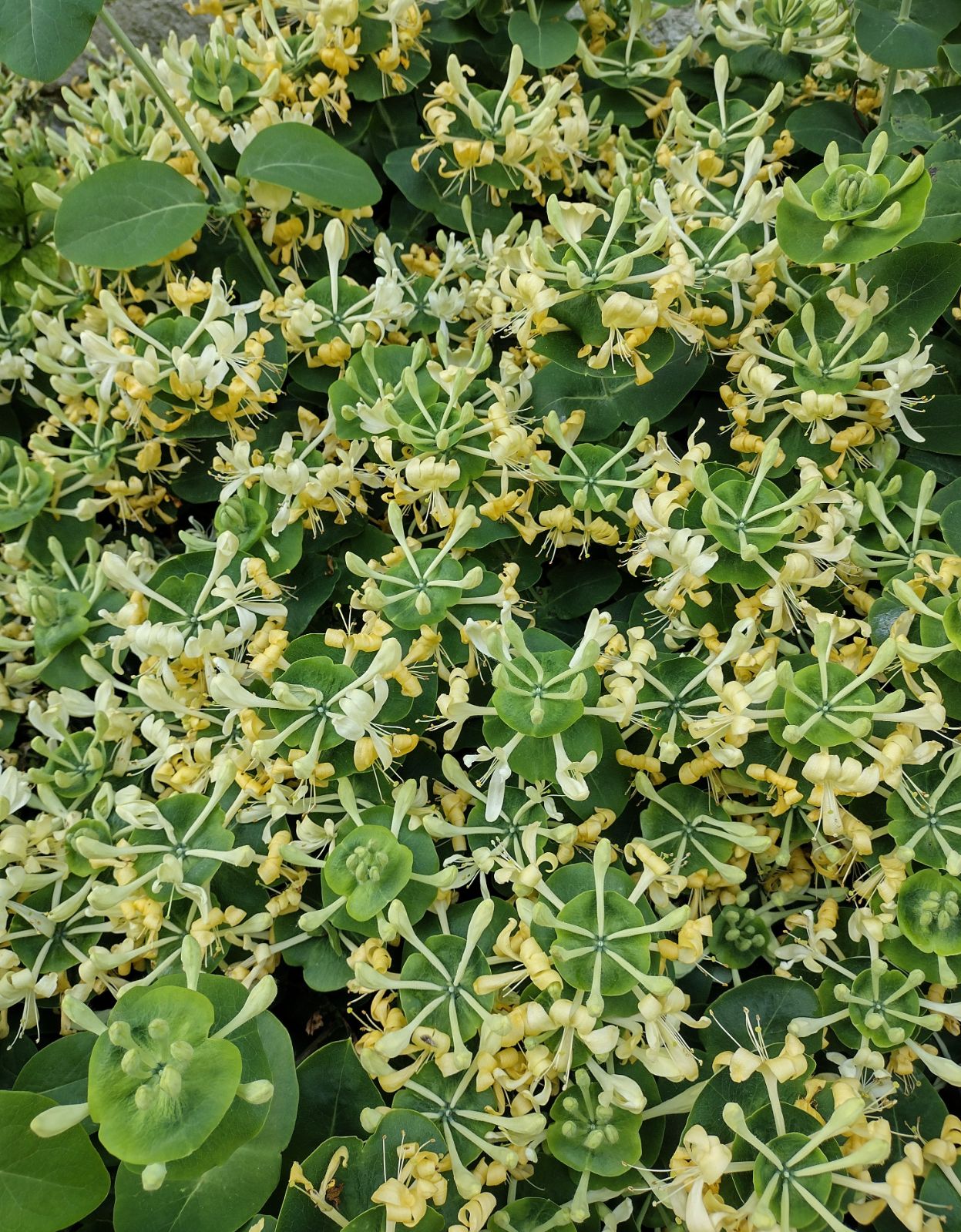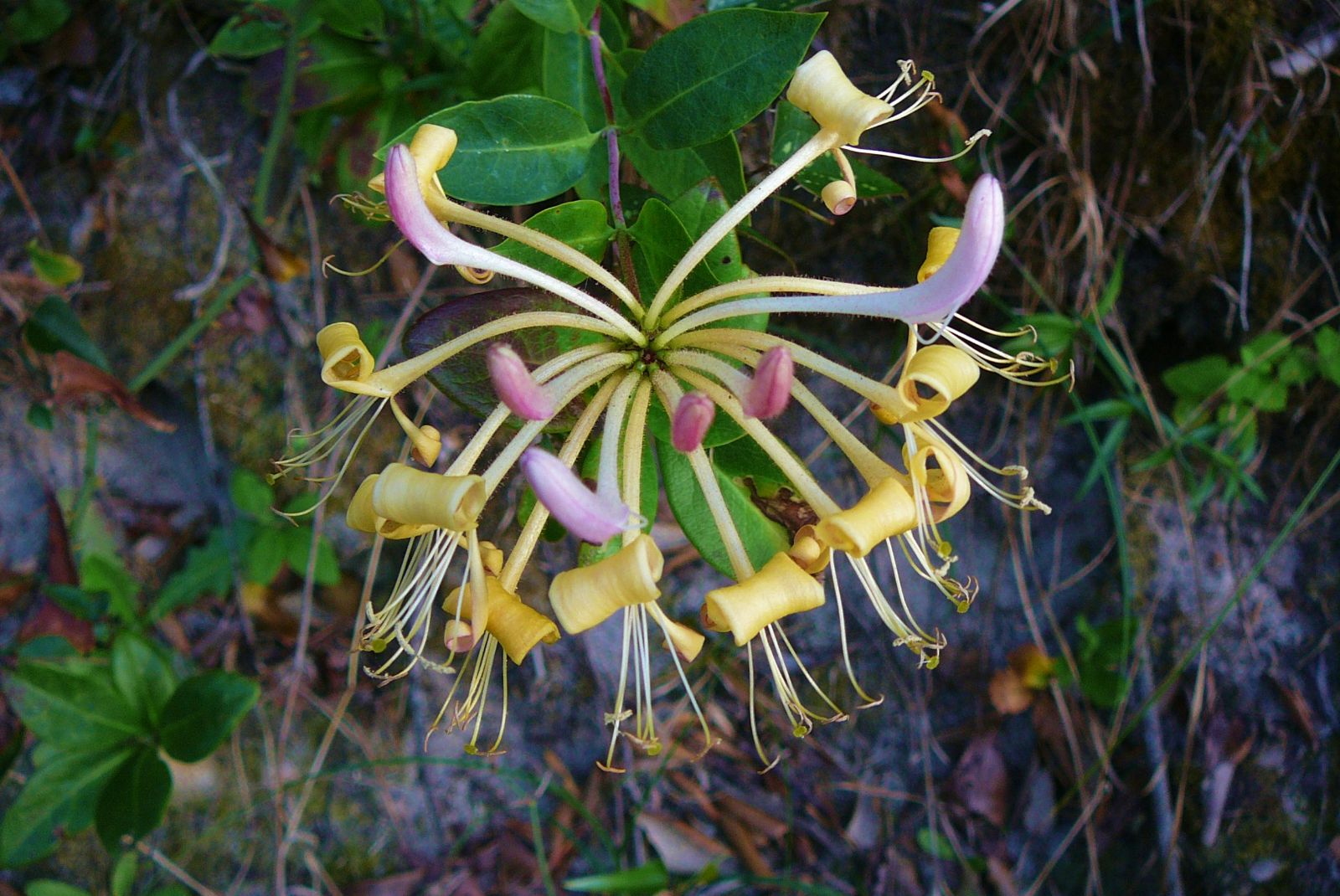Lonicera caprifolium
Credits
Article from Bean's Trees and Shrubs Hardy in the British Isles
Recommended citation
'Lonicera caprifolium' from the website Trees and Shrubs Online (treesandshrubsonline.
Genus
Infraspecifics
Other taxa in genus
- Lonicera albertii
- Lonicera alpigena
- Lonicera alseuosmoides
- Lonicera altmannii
- Lonicera × americana
- Lonicera angustifolia
- Lonicera × brownii
- Lonicera caerulea
- Lonicera caucasica
- Lonicera chaetocarpa
- Lonicera chrysantha
- Lonicera ciliosa
- Lonicera deflexicalyx
- Lonicera dioica
- Lonicera etrusca
- Lonicera ferdinandii
- Lonicera flava
- Lonicera fragrantissima
- Lonicera giraldii
- Lonicera griffithii
- Lonicera gynochlamydea
- Lonicera × heckrottii
- Lonicera henryi
- Lonicera hildebrandiana
- Lonicera hirsuta
- Lonicera hispida
- Lonicera iberica
- Lonicera implexa
- Lonicera japonica
- Lonicera korolkowii
- Lonicera ledebourii
- Lonicera maackii
- Lonicera maximowiczii
- Lonicera microphylla
- Lonicera morrowii
- Lonicera myrtillus
- Lonicera nervosa
- Lonicera nigra
- Lonicera nitida
- Lonicera periclymenum
- Lonicera pileata
- Lonicera prolifera
- Lonicera prostrata
- Lonicera purpurascens
- Lonicera × purpusii
- Lonicera pyrenaica
- Lonicera quinquelocularis
- Lonicera rupicola
- Lonicera ruprechtiana
- Lonicera sempervirens
- Lonicera setifera
- Lonicera similis
- Lonicera splendida
- Lonicera standishii
- Lonicera syringantha
- Lonicera tangutica
- Lonicera tatarica
- Lonicera tatsienensis
- Lonicera × tellmanniana
- Lonicera thibetica
- Lonicera tomentella
- Lonicera tragophylla
- Lonicera trichosantha
- Lonicera xylosteum
- Lonicera yunnanensis
A deciduous climber up to 20 ft high, not downy on any part except sometimes the outside of the corolla. Leaves obovate or oval, usually tapered at the base, rounded at the apex, 2 to 4 in. long, about half as wide, glaucous, especially beneath. The lower leaves of the shoot are stalked, the higher pairs are sessile; finally, the uppermost one to three pairs are united round the stem, each pair forming a cup, and in their axils the flowers are borne. Flowers in whorls, fragrant, produced from June onwards. Corolla yellowish white, tinged with pink, 11⁄2 to 2 in. long, two-lipped, the tube slender. Fruits orange-coloured.
Native of Europe, naturalised in Britain, possibly wild in the south-east of England; also naturalised in the eastern United States. This beautiful fragrant honeysuckle differs from L. periclymenum in the uppermost pairs of leaves (in whose axils the flowers are borne) being united.
From the Supplement (Vol. V)
When the present edition was being prepared, it was overlooked that the geographical distribution of this species and L. periclymenum had been wrongly stated in earlier editions, although the error was corrected in the second printing, so far as space allowed. L. caprifolium is genuinely native from Italy and eastern central Europe through the northern Balkans and Asia Minor to the Caucasus and northern Iran, but naturalised in south-west Europe and occurring as a garden escape in various parts of the British Isles (mostly in south-eastern England). L. periclymenum, by contrast, is a native of much of Europe but does not extend into south-west Asia.
The old name for L. caprifolium was Italian honeysuckle. In earlier times, when it was more cultivated than it is today, at least two sorts were grown. Those described by Miller were the Early White, starting to flower in May, with very fragrant white flowers; and the Yellow Italian, with yellowish red flowers, opening a little later.




